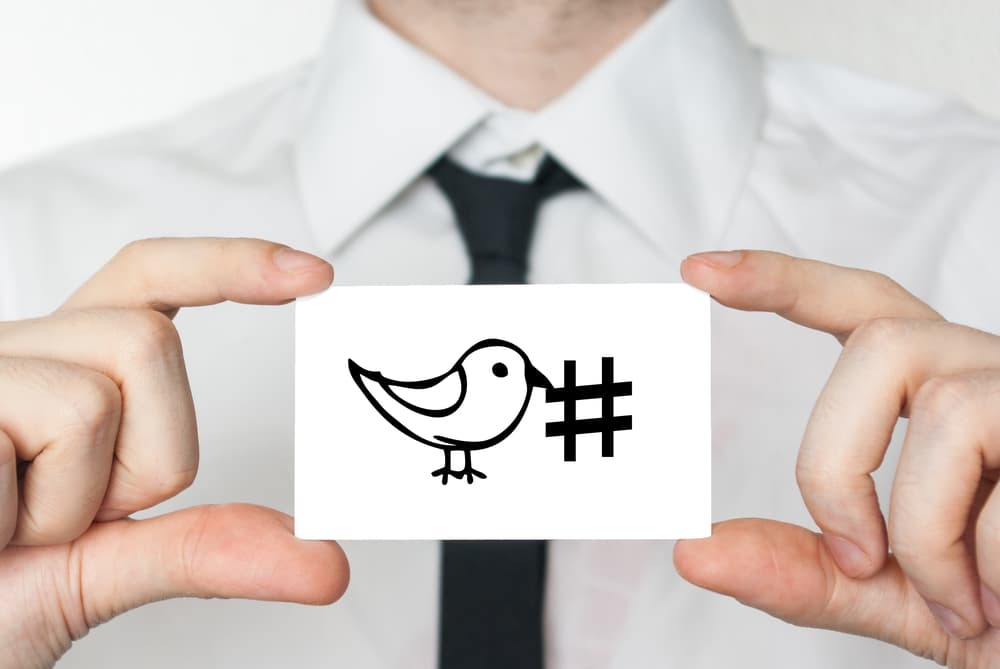The use of hashtags in social media has grown enormously in recent years; so much so that not including hashtags in your branding strategy is a missed opportunity.
Social Media can be a powerful marketing tool. Statistics show that the number of social media users worldwide in 2018 is 3.196 billion, up 13 percent year-on-year; that’s a whole load of people waiting to see new social media posts every day! With so many users it makes perfect sense that hashtags have become an important part of posts; there is a potential audience here that cannot be ignored.
The hashtag function of Twitter means that people are able to search for key words and allows you to become part of a bigger conversation, enabling you to reach a wider audience. If a certain hashtag is being used a lot, this hashtag begins to ‘trend’, and those trending become available for all Twitter users to see. This way, your product, business or event can be exposed to a potentially enormous audience. Sounds great – and it can be if you are creative with your hashtags, but this takes a little research and a little time to get it right. Spending time on researching is important; it would be a disaster to have your brand associated with an event or cause that is against what you stand for or one that is overused.
When choosing hashtags, it isn’t necessary to choose too many; it’s much more effective to come up with something that is easy to remember and has staying power. However, it is advisable to avoid ‘spamming’ or overusing your chosen hashtag. This can turn potential customers against you or can saturate their timeline so much that the message begins to get ignored. Twitter is a fantastic way to start a conversation with your current and potential customers, so make sure you make the most of the opportunity!
There are a couple of key marketing strategies when it comes to knowing how to use hashtags in your branding strategy.
Use a brand hashtag as your company name or a company tagline. Make this unique to your business and use it as your signature tag, encourage people to use it in their posts so that your brand gets marketed too. Once you have a few hashtag ideas do a search for them on Twitter, Instagram, Pinterest, Google+ and Facebook before you implement it. There will be no value in having a hashtag that is similar to a competitor or worse still is associated with something that is completely against the ethos and values of your business. It makes sense if you already have a tagline that people know and recognise to use that as your hashtag.
It’s important to remember to keep it simple, pretty short and easy to spell if you want people to remember it and use it!
KitKat is a great example of the use of a brand hashtag, using their tagline #HaveABreak. They use it consistently across their social media sites. People know and recognise this hashtag and use it to engage with other KitKat lovers.
Create a campaign hashtag for your marketing campaigns. If you are having a sale or an event creating a unique hashtag will help promote this short-term promotion. Encourage people to use it in their posts so that your campaign gets extended reach.
Again do your research when thinking up a campaign hashtag, if it’s already popular on social media sites, go back to the drawing board. Promote your campaign hashtags as a method for your customers to engage with you and other customers throughout the duration of your special offer. Here’s an example for you: In 2017 Adidas cemented its position as both a fashion icon and thought leader with its #ORIGINALis hashtag campaign. Focused on the new Adidas Originals line, they asked people to re-think the concept of being unique. They partnered with some big names in the hip-hop world including Stormzy, Snoop Dogg and ASAP Ferg to promote their new line.
Tying in to trending hashtags is another effective way to use hashtags in your branding strategy.
Trending hashtags are continuously changing so there is a bit of work in keeping up with them if you want to link your business, but when you do see a trend that relates to your business, engage in it by using the tag. When you do use a trending tag it has the potential to reach a massive audience; much more than your regular followers – and it’s free! Trends on Twitter can be found on the left hand side of your computer Twitter feed.
Oreo have it nailed when it comes to using trending hashtags… they were on top of the Royal Baby trend and recently used trending hashtags #SharingisCaring and #SharkWeek. Their clever tweet marketing certainly gets them talked about!
Using niche trending hashtags is a good way to capture your target market, especially if your products are less main-stream.
Bring the hashtag outside of the digital world!
All of the above focuses on using hashtags in your online marketing, but why not use it offline too? This gives the valuable option of linking online and offline campaigns, and allows consumers to really get involved will products and events. For example, adding your campaign’s hashtag to physical, printed merchandise (like Yorkshire Tea did with their printed bag and printed cup merchandise) could make your customer aware of your online presence and prompt them to search for your hashtag which they otherwise might not have known about! A good hashtag brand name or tagline can look really well on your printed carrier bags. Not only will it look great but it will also encourage people to look you up online, follow your social media and generally get more in tune with your branding!


